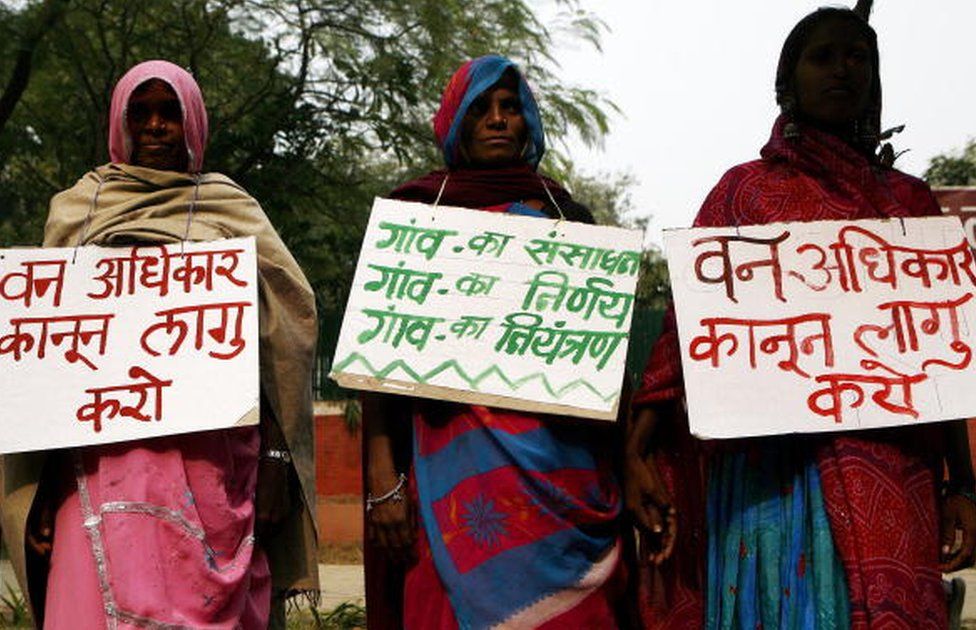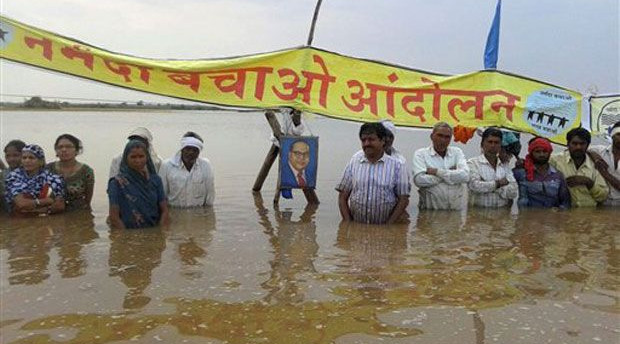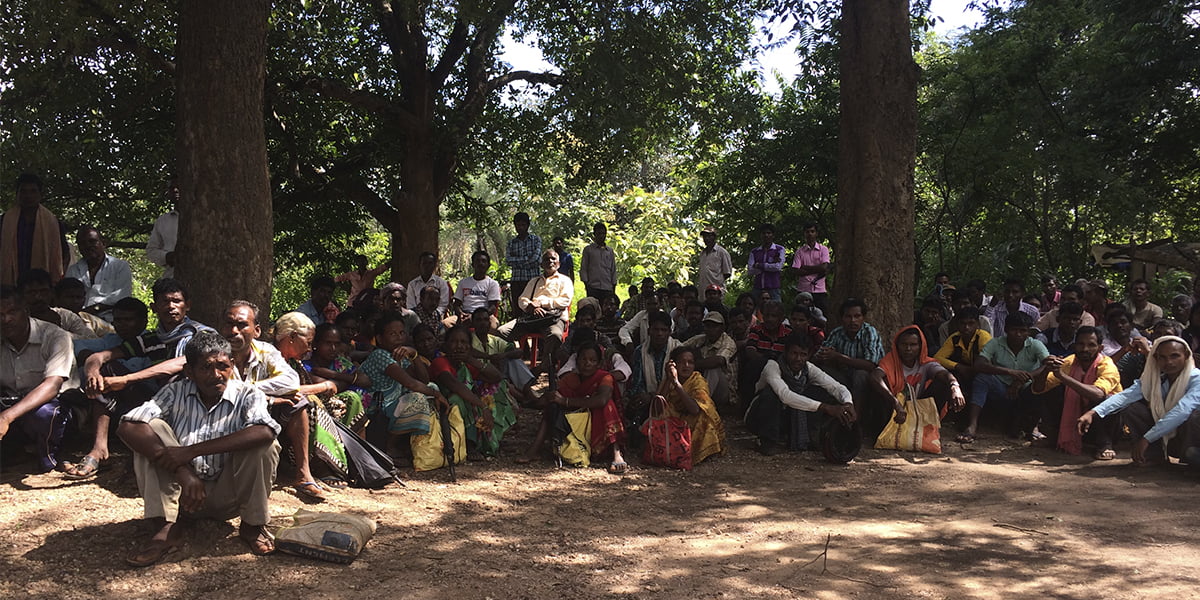Editor’s Note: FII’s #MoodOfTheMonth for July 2022 is Gender and Environment. We invite submissions on the many layers of this theme throughout the month. If you’d like to contribute, kindly refer to our submission guidelines and email your articles to sukanya@feminisminindia.com
Thanks to the ‘environment vs economy narrative‘ that has been flooding mainstream media, our society has collectively attributed themes of environmental justice to backwardness and by extension, to marginalised communities. One only needs to take a look at the humiliating portrayal of the tribal population of India to understand how closeness to nature was always seen as a sign of regression from ‘civilisation’ for these groups.
The Malayalam movie ‘Bamboo Boys‘ that paints tribals as gibberish-speaking and dressed in tiger-printed loin clothes with leaves attached to them, is a clear indicator of how this intimate relationship to the environment is seen as obsolete in the urban landscape the events of the film takes place in.
Even the recent smash hit RRR, that ironically has made its lead play a tribal leader, depicts the whole tribe as a savage set of people living in herds. What is even more stereotypical is perhaps the fact that the tribal character requires the Savarna saviour every step of the way to accomplish his mission, but the only direct support that the Savarna man requires of the tribal person is to offer him medicine made out of leaves, to counter a specific poison.
This attitude gets mirrored in real life as well. In a first-person account published by the Firstpost, Farida K Al-Mubrik talks about how the Siddi tribe is called on by the government to perform their cultural dances and appreciated for their costumes (that usually have feathers and other natural symbols attached), but when it comes to providing remuneration for the same or other activities, their tribal identity is seen as incompetent.

Adivasi and tribal communities: Portrayed as primitive and anti-development
The Adivasi communities in India have been historically denied their livelihoods through multiple laws dating from colonial rule. These mandates have been designed to systematically keep forest-dwelling communities out of the mainstream, with little to no safety net to provide alternate sources of livelihood.
Any mention of sacred groves or worshiping nature is looked at through the lens of superstition and never as conservation. Newer awareness of the importance of such practices and their honorary mentions in textbooks with outdated information is not going to do justice to the systemic environmental oppression such communities face.
By depicting the marginalised communities who dwel closer to the forests as those opposed to development, they have not only been isolated from the rest of the population, but also made political scapegoats. Taking away their lands for building projects is described as sacrifices for the good of the nation, yet the marginalised communities are the only ones these sacrifices are required of. This trend is not restricted only to India.
While it is solely not the responsibility of the indigenous groups to advocate for environmental conservation, we often see them at the forefront of such issues. The mainstream population which gets uncomfortable when we talk about reservations or other developmental measures for indigenous communities seems to be much more empathetic to the causes of the environment raised by them. This probably stems from the awareness of the interconnectedness of ecosystems, thus benefiting everyone. Whatever the reason may be, environmental conservation often acts as a buffer for indigenous communities to raise their general concerns on much bigger platforms
The Dakota Access pipelines that pass through the area inhabited by the Standing Rock Sioux Tribes, the massive ecosystem changes that the native Hawaiians are facing due to unchecked tourist practices, and the like, are examples of the disproportional burden that marginalised, indigenous communities are faced with in the name of development.
Surely, there are economic implications to this forced distancing from the environment to indigenous communities in India and the world over. Separation from the environment is, in a way, the denial of identity for such communities. The United Nations Permanent Forum on Indigenous Issues, has defined indigenous peoples as having “historical continuity or association with a given region or part of a given region prior to colonization or annexation; identify themselves as indigenous and be accepted as members by their community; have strong links to territories, surrounding natural resources and ecosystems” among other things.
It is perhaps because of this connection to the environment being rooted to their very core that indigenous environmentalism goes beyond pure scientific discussion to that of a cultural and spiritual one.

While it is solely not the responsibility of the indigenous groups to advocate for environmental conservation, we often see them at the forefront of such issues. The mainstream population which gets uncomfortable when we talk about reservations or other developmental measures for indigenous communities seems to be much more empathetic to the causes of the environment raised by them.
Also read: Tribal Women’s Movement In Modern India
Terming environment conservation as a perfect platform for indigenous communities to raise their issues, however, is a patronising take on the whole subject. For one, it should not take a common concern with disproportionate effects for a society to take notice of its margins. Secondly, this assumption would imply that the conversation about environment conservation is always inclusive of marginalised communities
This probably stems from the awareness of the interconnectedness of ecosystems, thus benefiting everyone. Whatever the reason may be, environmental conservation often acts as a buffer for indigenous communities to raise their general concerns on much bigger platforms.
For instance, the Narmada Bachao Andolan gave many tribal communities a space to amplify concerns about their loss of livelihood and the consequences of unfulfilled promises of rehabilitation. From a more global perspective, the Tibetan diaspora has been clamoring against the Chinese oppression and denial of autonomy for decades. However, it is the climate emergency in the Tibetan plateau and the melting of the glaciers that have managed to capture wider attention, transforming into a platform to talk about the problematic, authoritarian rule.

Terming environment conservation as a perfect platform for indigenous communities to raise their issues, however, is a patronising take on the whole subject. For one, it should not take a common concern with disproportionate effects for a society to take notice of its margins. Secondly, this assumption would imply that the conversation about environment conservation is always inclusive of marginalised communities.
Acknowledgment of the benefits of community-based conservation practices has not translated into sharing the space in such conversations. While the Bishnoi community might feature in NCERT textbooks, we do not see the members of the community participate in social engineering or gain any benefits of social equity. This attitude is further reflected in problematic policies such as the EIA draft 2020 or in the plight of Adivasi communities evicted under the FRA Act, which was supposed to protect the forest dwellers.
Olayemi Fadahunsi, a student delegate attending the COP21 conference in Paris recalled her disappointment in the absence of voices of marginalised communities in what is termed to be one of the biggest platforms for environmental conservation efforts. She recalls the words of a 17-year-old girl from Samoa, “Climate change is a day-to-day thing for people in Samoa. As a teenager growing up it is my reality to see cyclones, flash floods, general flooding in the area we live in, droughts, and all sorts of extreme weather we see every day and it’s our reality. And out of this COP, I would like to see a legally binding agreement and my wish for the world is that everyone can concentrate on 1.5 because that is the only way our pacific islands can survive”.

Despite such discourse, global policy talks remain out of bounds for NGOs, climate activists, and groups that are direct representatives of marginalised communities. Measures like the UNEP collaborating with the UN Permanent Forum on Indigenous Issues on a report on traditional knowledge for ecosystem restoration and resilience, which was presented at the UN Environment Assembly‘s fifth meeting, kicking off the UN Decade for Ecosystem Restoration (2021-2030), are hopeful but not enough.
Mere sharing of space without sharing the power, resources, or agency to act on it is tokenistic at best, and appropriation at worst.
Also read: The Lives Of Odisha’s Tribal Women Street Vendors In The Pandemic
About the author(s)
Stephy is a masters student in Jamia. Her interests revolve around issues of conflict and peace, gender and mental health. She hopes to shed her inherent biases daily and become a better ally each day




